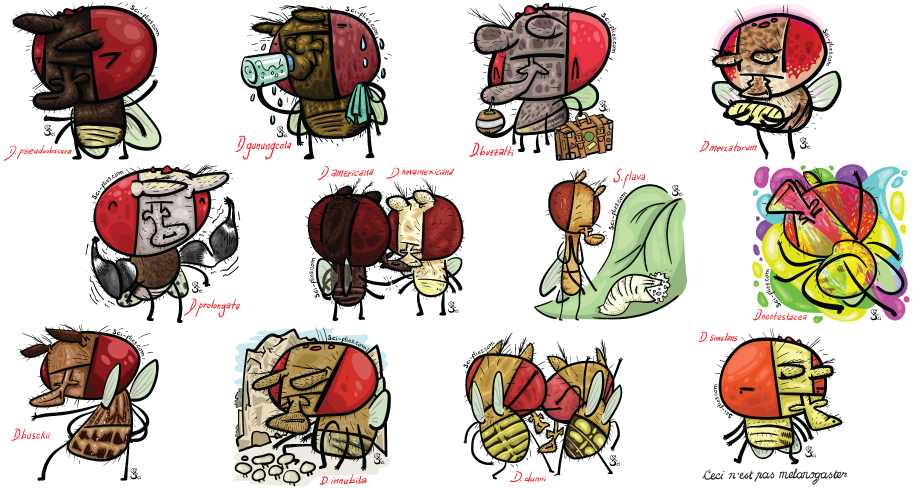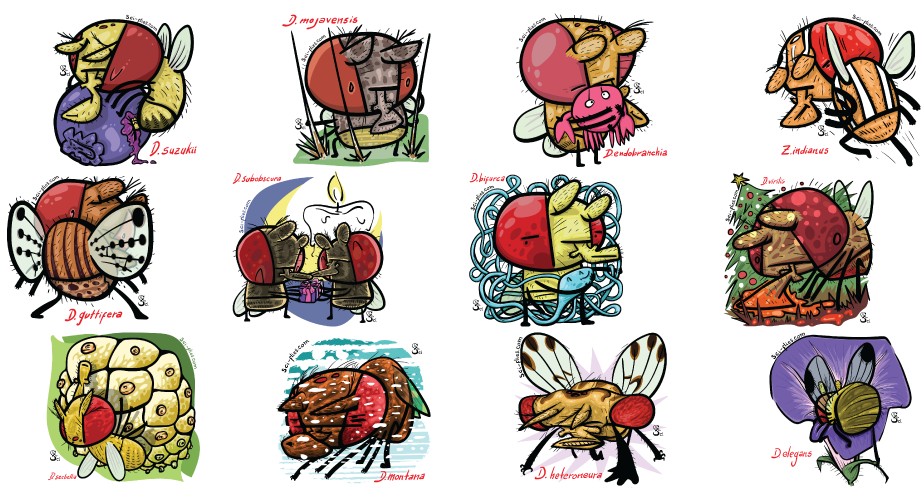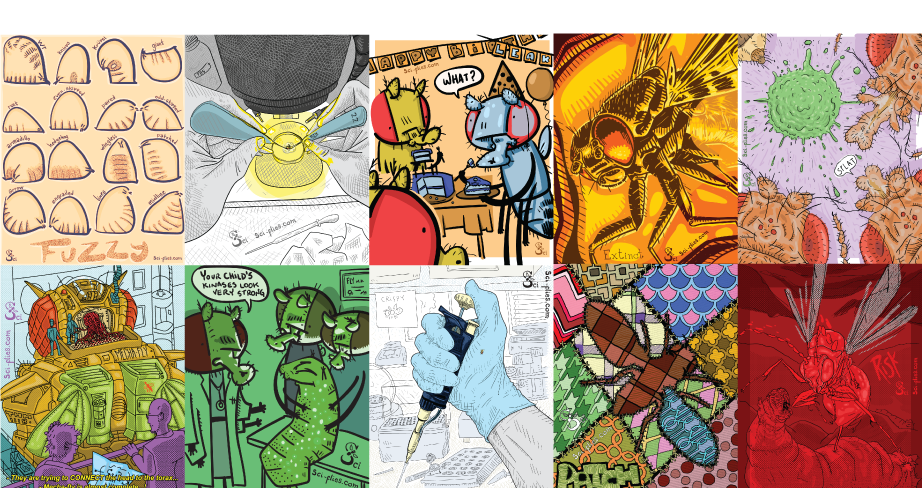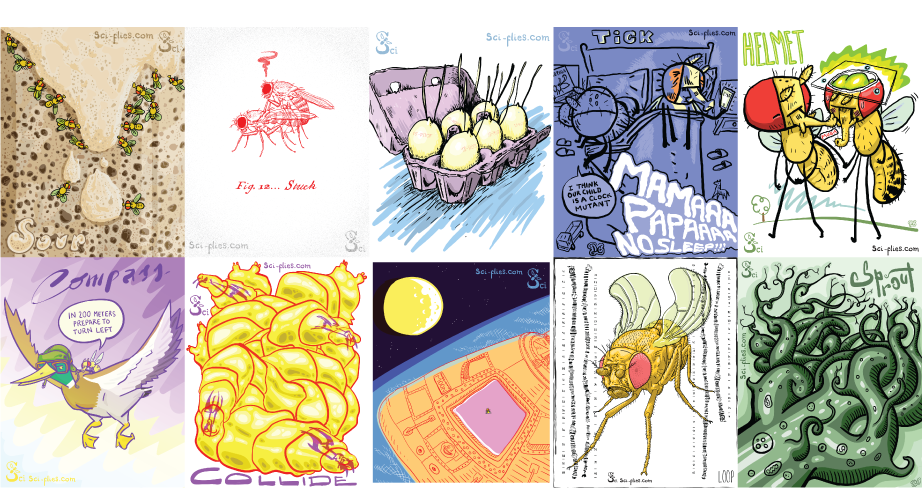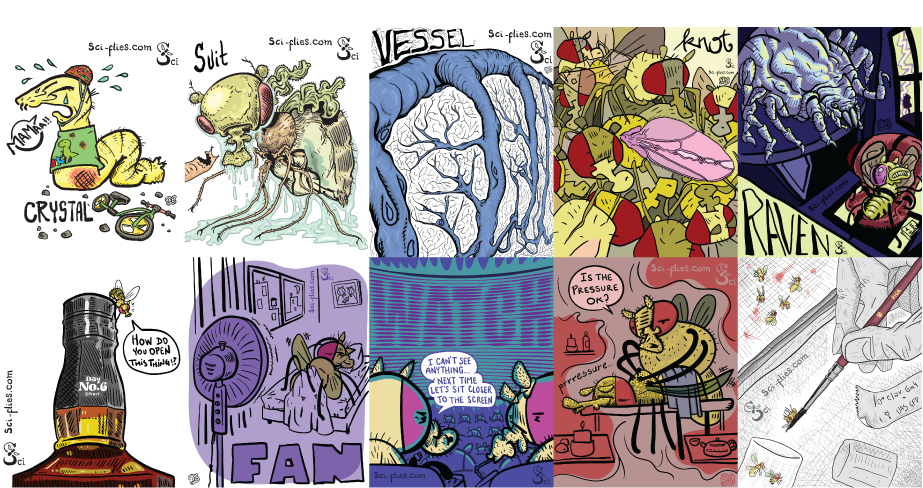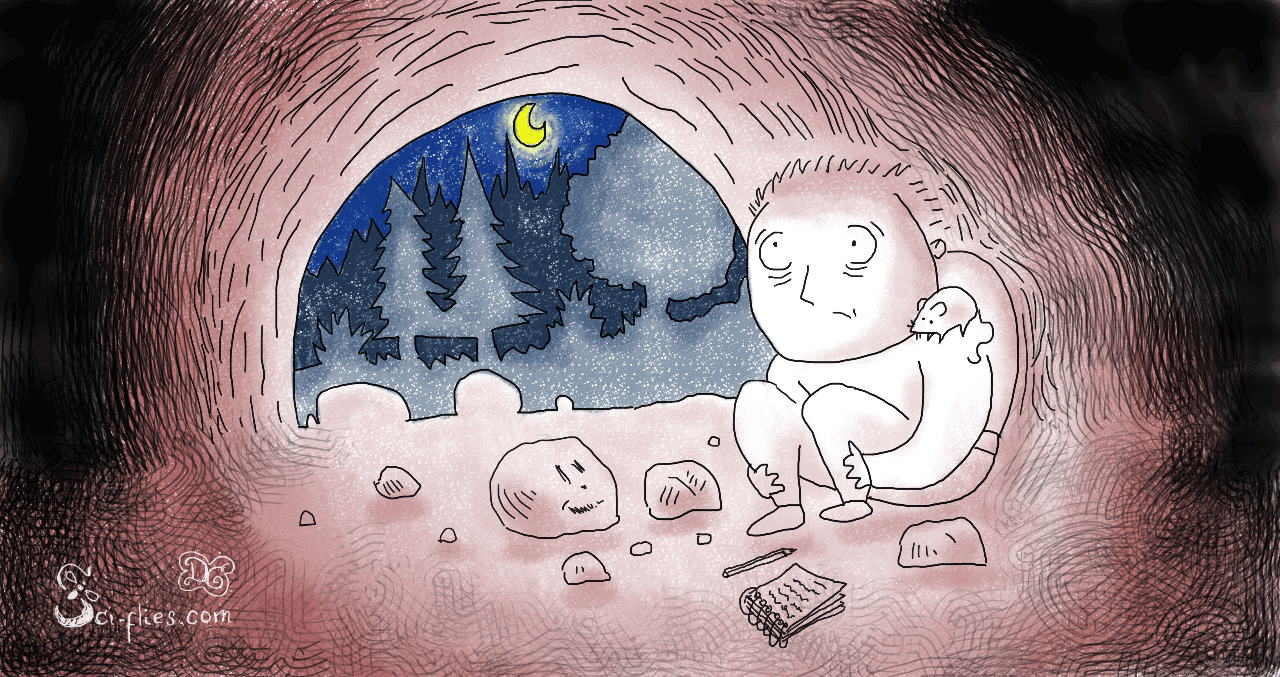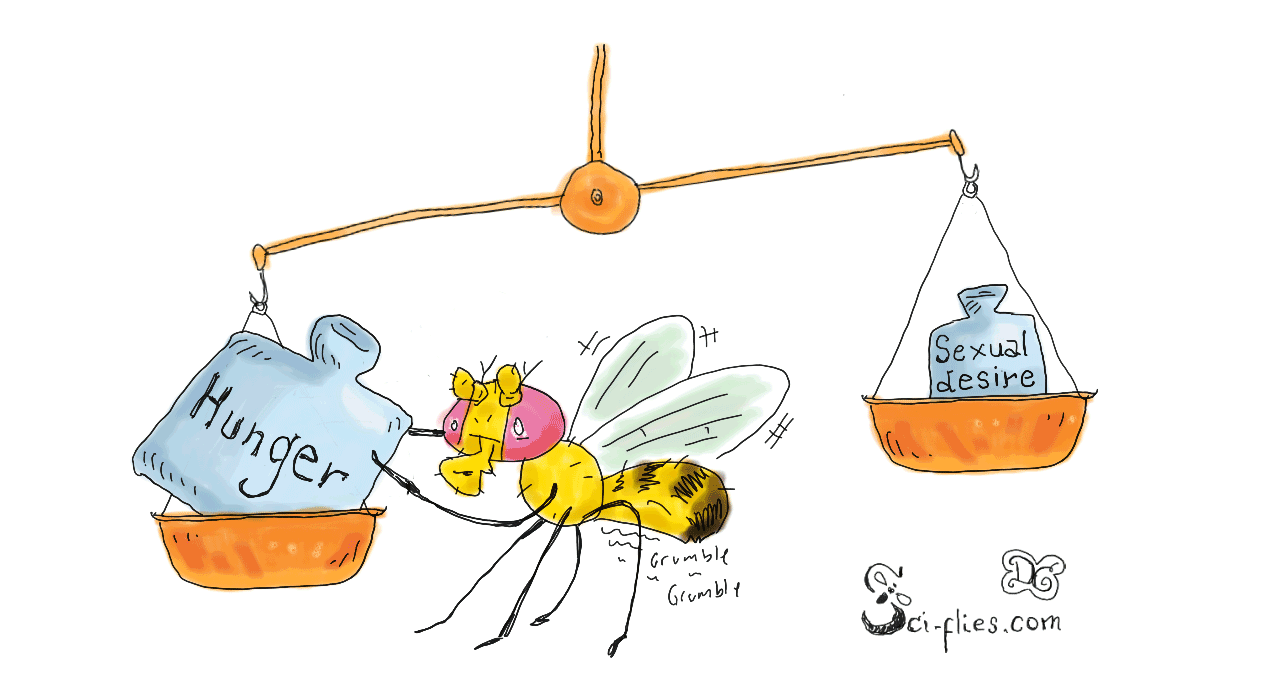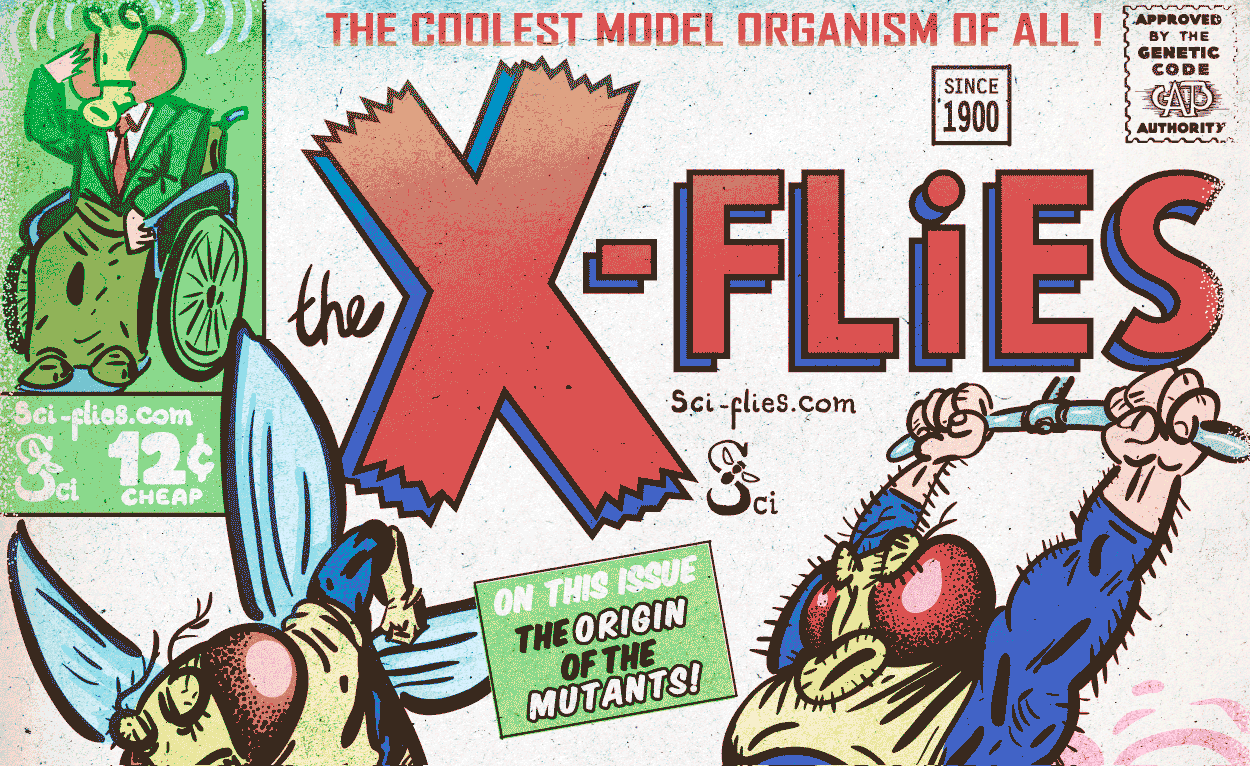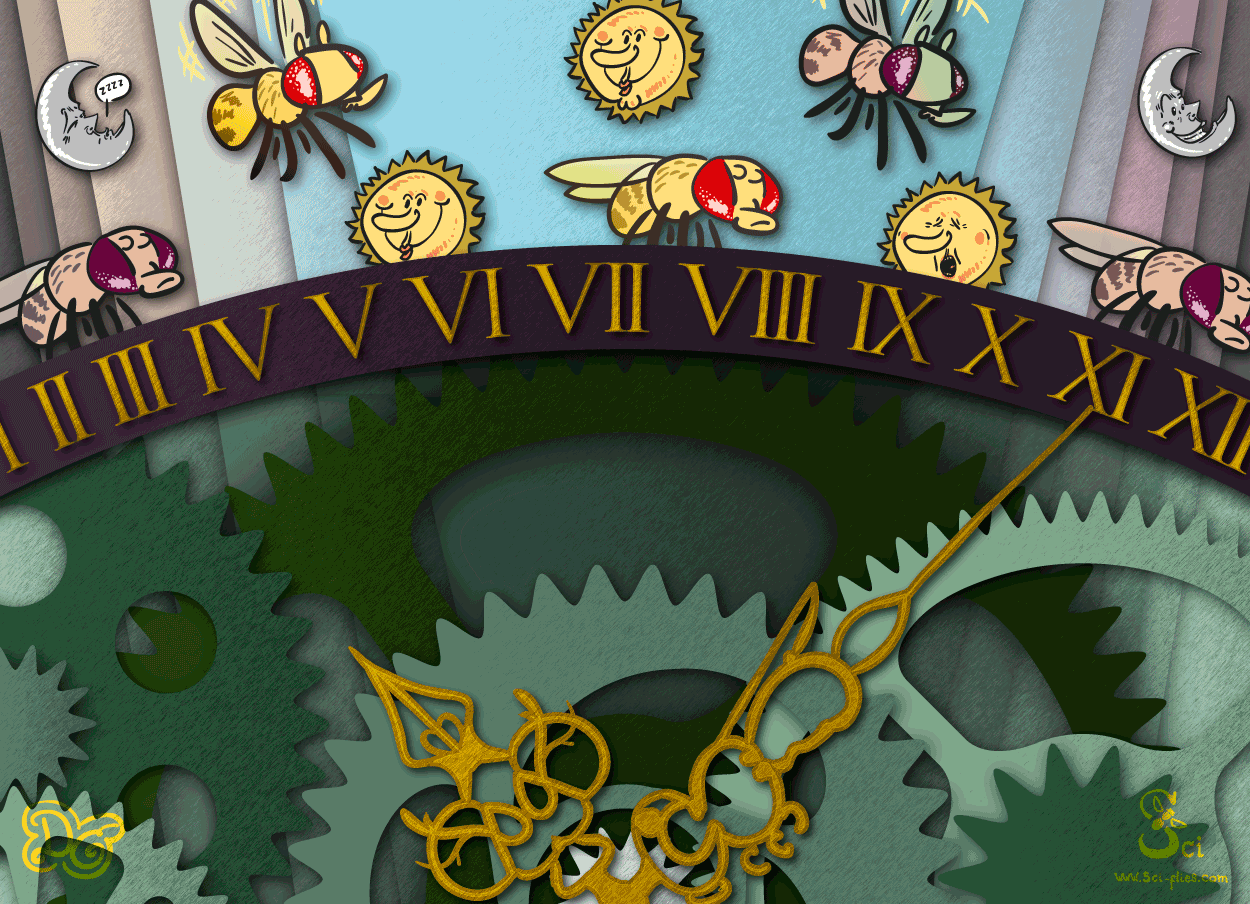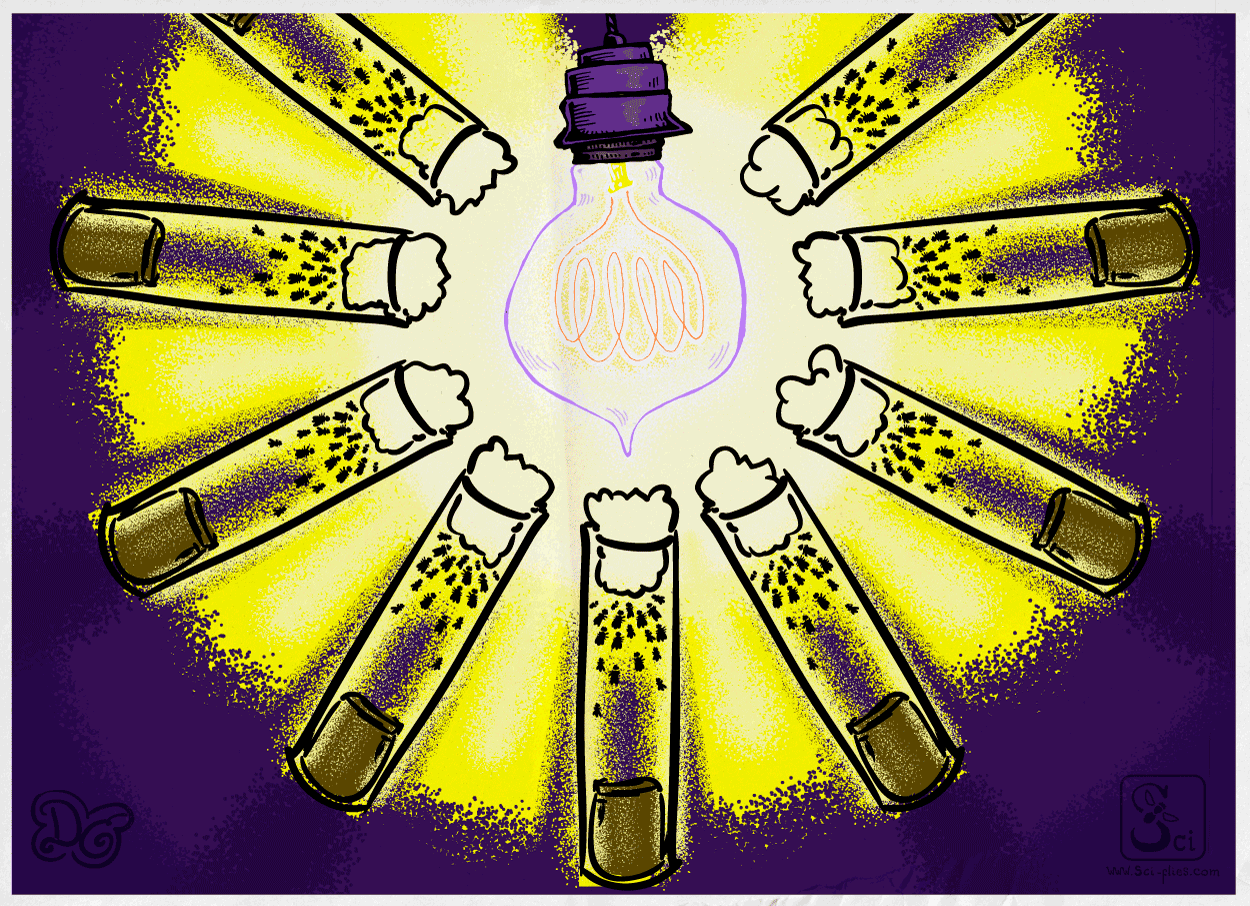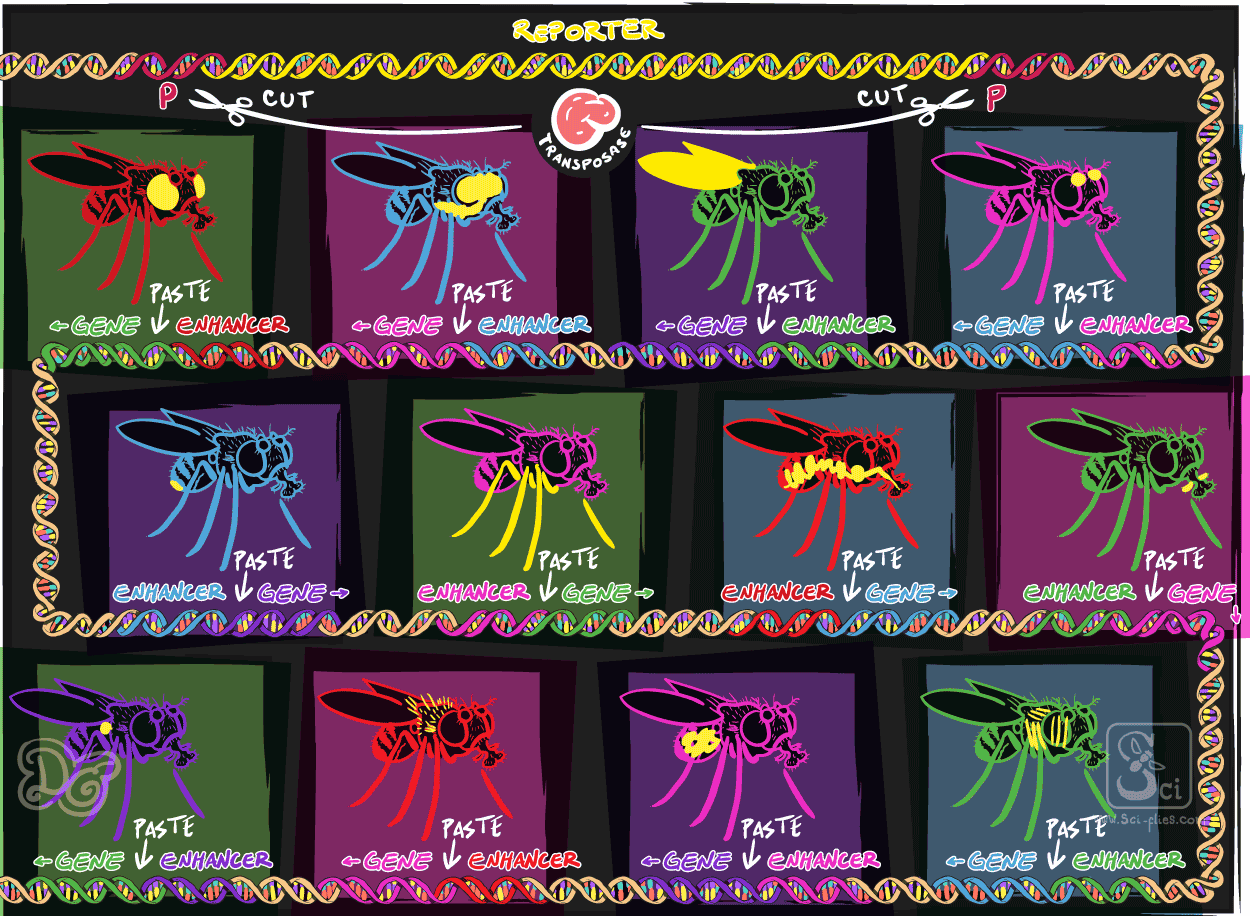Transgenic Flies - A Brilliant Technique
What is a genetically modified organism? What is a transgenic? Now that we have talked a little bit about the development of the flies, why we use them in scientific research, what DNA is and how it works, and a little bit about genetics and inheritance, we can introduce this somewhat technical topic: how do we make transgenic flies. This will allow us to talk about more recent works with a little more detail, in future posts.
In this post you will also find new theoretical concepts, which we did not mention before and which I hope to expand in the future (and I hope this does not scare you away, oh my dear readers). Let’s see how it goes.
Getting some genes - The green fluorescent Protein
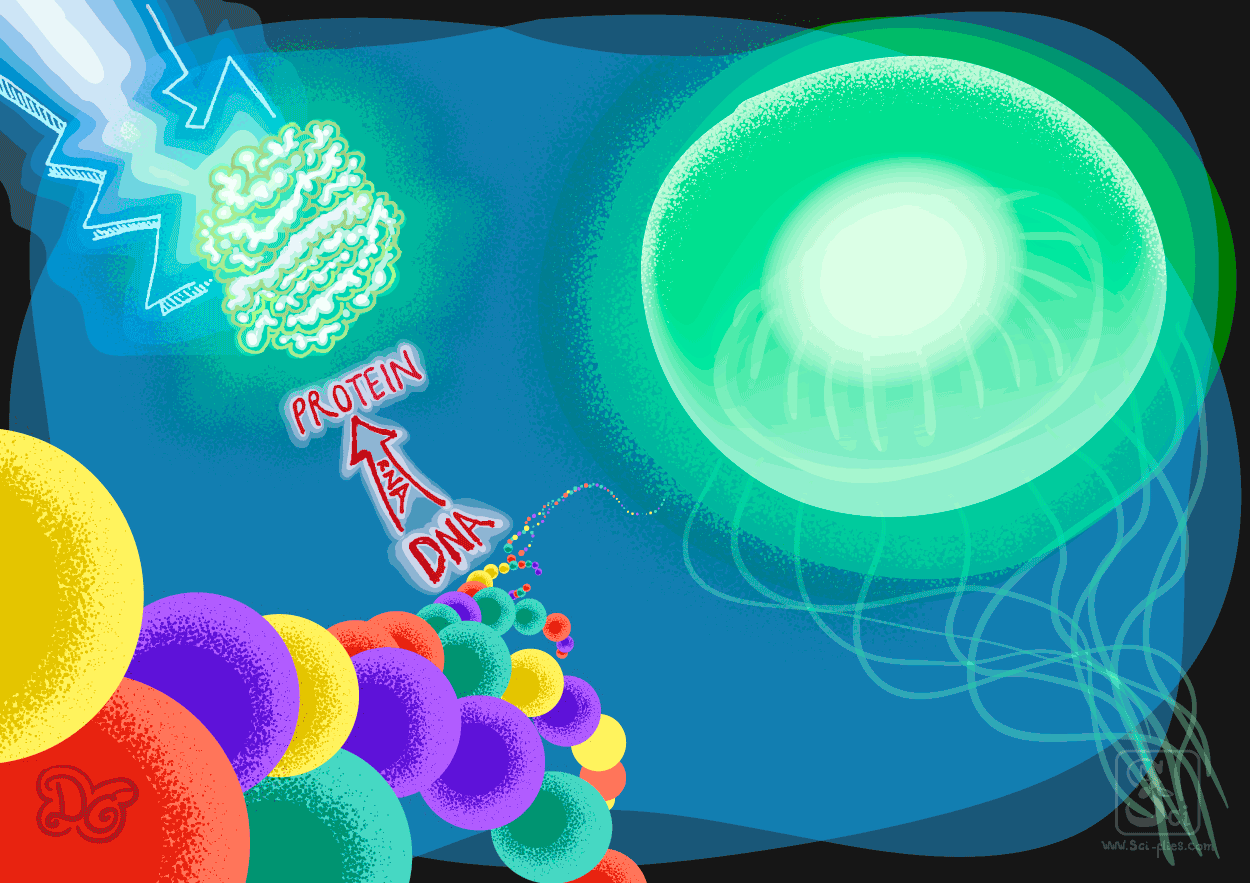
A genetically modified organism is one whose genetic material has been artificially altered. This includes any type of modification to the genetic material. For example, the flies that Morgan worked with had been genetically modified by chemicals and radiation that caused alterations in the DNA sequence (causing mutations). But Morgan and his collaborators did not know anything about the causes of the modifications they generated at the molecular level, they made them at random and without the possibility of directing or designing them previously. They were guided only by the results they could observe.
When the structure of DNA and its relationship with proteins was described in the 1950s, it began the study of how the genetic material functions at the molecular level. By knowing more about these mechanisms, the possibility to start using them to make specific, directed and planned modifications became a reality.
With this new knowledge, more precise modifications could be made. One of the simplest of these modifications would be inserting into the genome of an organism, genes that came from other organisms, which is known as transgenesis.
A transgenic organism is a type of genetically modified organism in which genes from another organism were artificially inserted.
The production of a transgenic organism requires three things:
- To obtain the genes or DNA sequences that you want to insert
- To put that DNA in the conditions that allow its incorporation into the genome of the target organism.
- To insert the material into an organism that can incorporate it and inherit it to its offspring.
We will use a fictitious example to illustrate how this is done in Drosophila flies.
Let’s say we want to see details inside a fly. We are studying a biological process and we know that there is a protein coded by a certain gene that is important for this process. We want to know in which organs, in what cells and at what moments of the life cycle is this gene expressed. Moreover, we would be interested in keeping the insect as whole as possible and why not, alive. What can we do to see where the gene is expressed?
A widely used tool is the green fluorescent protein (GFP). In the 60s and 70s it was discovered that the jellyfish Aequorea victoria fluoresces thanks to two proteins, one breaks a molecule that produces blue light and the other, called GFP, receives blue light and produces green light. The GFP protein isolated from the jellyfish can be stimulated by any source of blue light to produce green light.
As we mentioned, proteins are encoded by DNA sequences called genes. At the beginning of the 90s the DNA sequence that allows the jellyfish to produce GFP was isolated (an interesting story that we can talk about sometime).
If we could get the fly to produce GFP in the cells and organs where our protein of interest is produced, we would be able to see them by simply illuminating our animal with blue light. So, let’s do it.
Molecular cloning and vectors
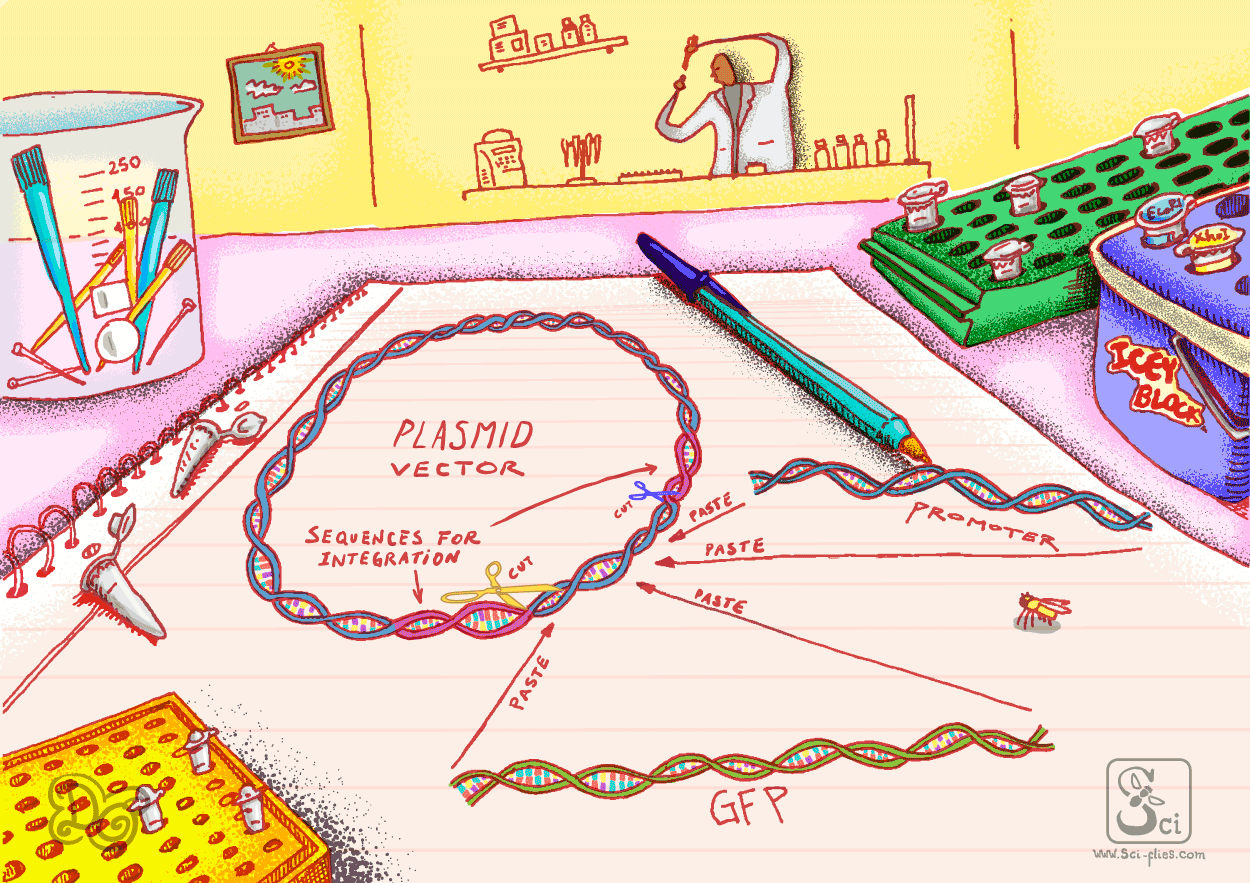
Well, let’s go into the molecular world. Let’s see how it goes.
As we saw when we talked about DNA, the genome sequence has a lot of DNA that does not have instructions to make proteins (lots of DNA that does not contain genes). Moreover, most of the DNA does not code for proteins. What is in all that extra DNA? Some of the things that are there are the sequences that serve as instructions to activate or inactivate the transcription of genes, which are called promoter and enhancer sequences. How is that?
There are proteins called transcription factors that recognize the promoter sequences, bind them and allow or prevent the action of other proteins that are responsible for carrying out transcription. If the appropriate transcription factors are present in a cell at a certain time, the gene is going to be transcribed (there are extra complexities in the system, but for now this is sufficient).
Therefore, if we have the sequence with the instructions for the expression of a gene that interests us (the promoter), we can use thos instructions to express any other gene (GFP for example) in the place and site where our gene of interest is expressed.
Then, fulfilling point 1 of our list of requirements, the DNA we are going to insert will be the one that codes for the GFP protein and the DNA with the instructions that control the transcription of our gene of interest.
How do we get it in the appropriate conditions so that it can be integrated into the fly genome?
Luckily, nature has already generated all the tools beforehand and it is only a matter of discovering, modifying, combining and using them. In this example we are going to use circular DNA molecules (that is, their ends are joined, they are not linear) called plasmids that will work as a vehicle or vector to get our DNA sequences in the fly’s genome.
First, we’ll make copies of the DNA we want to put into the fly (the promoter and GFP) with a technique called PCR. This technique uses the minimum elements of the DNA replication machinery in a tube to generate copies of any DNA that interests us.
Then we will cut the plasmid with proteins that cut DNA in precise places and we will paste those sequences that we have generated, using another protein that pastes DNA (at present there are commercially available variants for these techniques that make it very easy to do). This way we will have our plasmid ready. Now, how do we put it in the fly’s genome?
The plasmids used for transgenesis have been engineered to include sequences that allow it to integrate into the genome. There are different types of these plasmids, for different special needs, some allow the integration in specific sites of the genome, others will cause random insertions. The integration is done by a protein that recognizes these sequences, cuts the plasmid there and then pastes it into the genomic DNA.
With the DNA that interests us, put into the plasmid we have point 2 of our requirements ready.
Drosophila Embryo injection
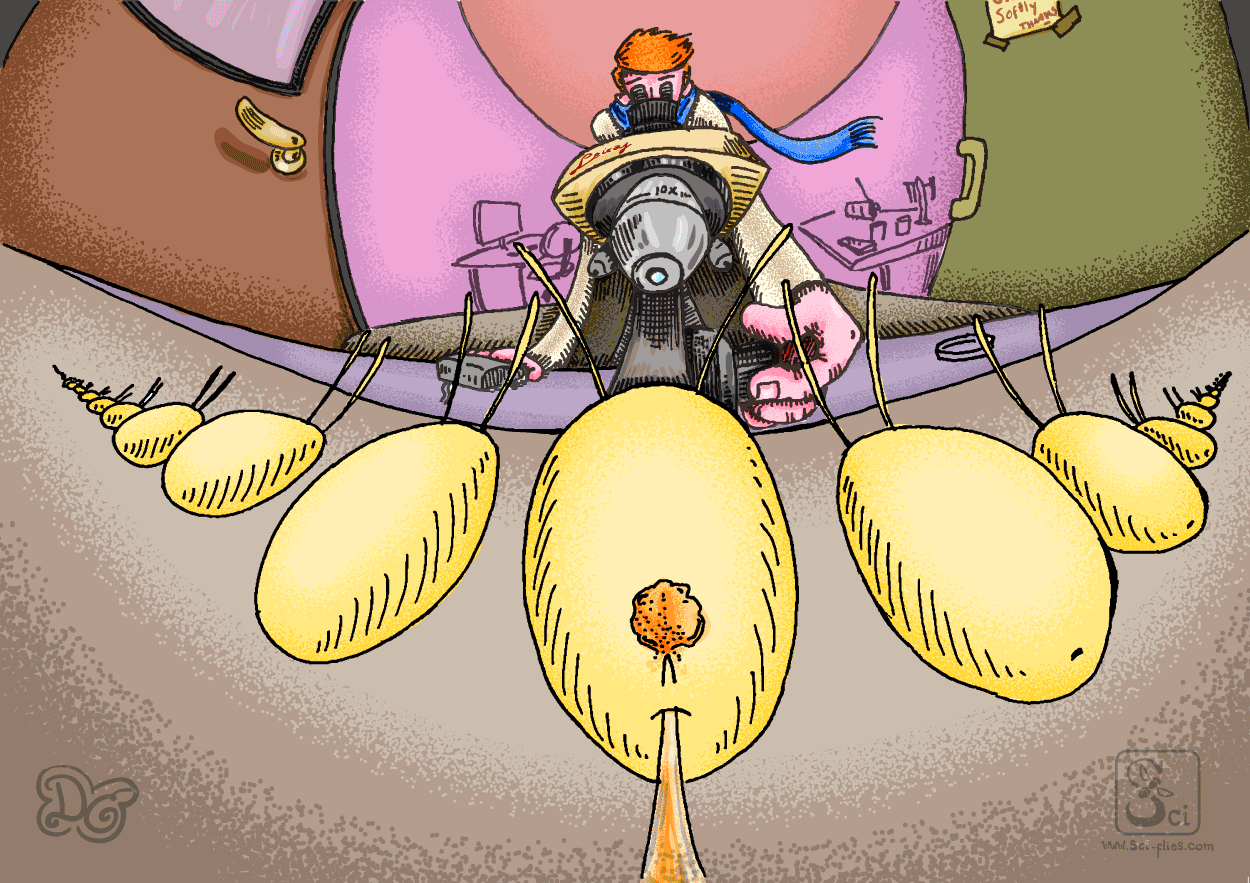
How do we put the DNA inside the fly so that it integrates into the genome? How do we make sure that this modification is permanent and hereditary?
Since we want the DNA to be inherited, we must insert it during the early development of the organism, at the point where the cells that are going to generate the gametes (the sex cells, that is, the ovules and spermatozoa) have not yet formed. So, when these cells are formed, the inserted DNA will be in them, then in the gametes they produce, and in the offspring formed with those gametes (if the DNA is not in the gametes it will not pass to the next generation).
To complete step 3 of our requirements and put the DNA into a fly, we simply inject it into an early embryo.
As we saw in a previous post, in the first moments of development the embryo has no cells, but is a single unit with a lot of nuclei inside. This allows the injection to be simple, since it does not require much zooming to see them and the manipulation can be done by hands.
In the first hour of embryonic development there are some nuclei that will be located in the most posterior part of the embryo and will form the polar cells, the precursors of the gametes.
We must make sure that the DNA we want to integrate into the genome does so in the polar cells, so that it can be part of the gametes and be inherited to the next generation of flies that will be formed from those gametes and to all the subsequent offspring.
What we do then is to inject the plasmid into the back end of the embryo, before the polar cells form.
To inject we use a thin glass needle prepared at the moment of injection from a glass tube. We use a machine, an electronic injector that controls the pressure so as not to burst the embryos when we inject. In any case, if you do not have a machine, you can do it with a syringe (connected to the needle with a hose), it is less efficient, but it works. We inject many embryos because the technique is not 100% efficient (some die, others do not incorporate DNA, etc.)
Once the embryos are injected, we take great care of them for a few days. We lift the larvae that come out of the eggs and place them in a tube with food. The next thing will be to wait for them to become adults and cross them with other flies to get the next generation, in which there will be some flies that will have the DNA we injected permanently incorporated into their genome. They will be transgenic flies.
Our transgenic fly
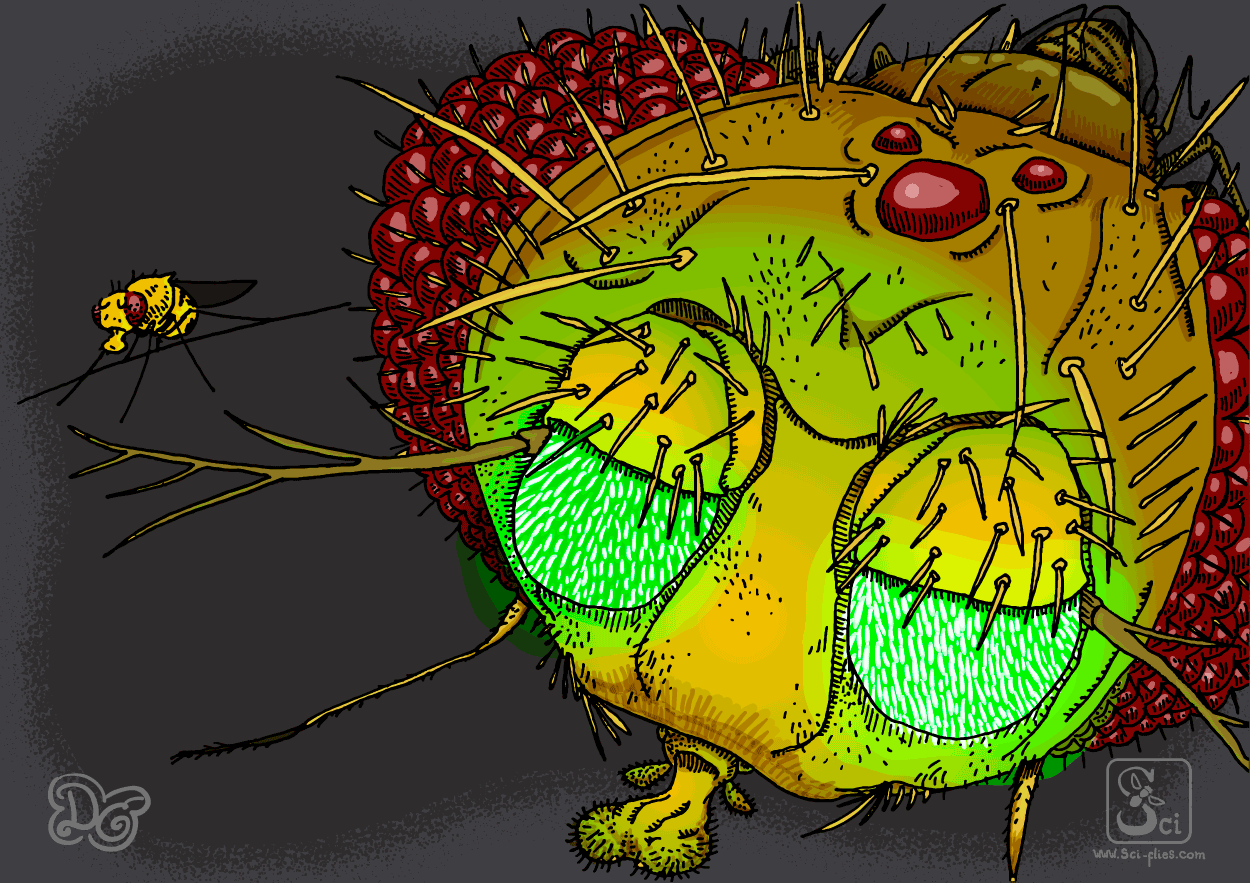
Now we have a transgenic fly that lets us know when and where the gene that interests us is expressed.
In summary,
- We combined the DNA that encodes a fluorescent protein from a jellyfish with fly DNA that contains instructions to indicate where to express it.
- We put that genetic material in a vector that allows it to be incorporated into the genome of a target fly.
- We injected that DNA into embryos and incorporated it into the genome of its gametes and their offspring.
As a result, in our invented example, we observe (in my drawing) that the GFP protein is expressed in the antennae of the adult fly!
In our example we used GFP as a transgene. I chose it because it is a striking example and it was fun to try to draw fluorescent flies and jellyfish. But I hope you can see that this technique opens a lot of possibilities.
I leave you with a few questions. You can answer and discuss them if you want in the comments below or in the Facebook page of this site.
What else do you think that could be done with these techniques?
What other modifications could be useful?
What if I want to see the expression of more than one gene at a time? How could we do it?
How do you think we can do to discover genes that are expressed in a particular place (for example, the antenna, the eye or others)?
Or if what interests me is not to see where the gene is expressed, but where the protein (the final product of gene expression) is located?
The techniques of transgenesis in the fly Drosophila were used for the first time in 1982 and since then, hundreds of genetic engineering tools have been added. They allow us to make increasingly precise manipulations and study the genetic and molecular bases of the most varied biological phenomena in great detail.
At present, there are techniques such as the much-mentioned CRISPR that allow not only to insert genes, but to eliminate them or to make modifications in a very precise and directed way. In future posts we will talk about this technique, how it works and what it allows to do.
See you next time!


